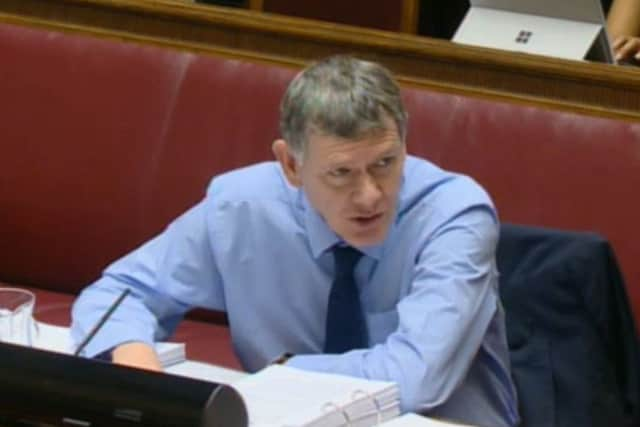RHI cost controls did less to save money than previously thought
and live on Freeview channel 276
In evidence which was yesterday put to the most senior civil servant in the Stormont department responsible for the scheme at that time, it was revealed that a decision at that point to increase the size of boilers eligible for the most lucrative tariff had blunted what at the time were seen as cost controls.
It has been thought until now that the scheme had been largely fixed in November 2015 and the RHI Inquiry has spent much of its time examining the allegation that DUP figures delayed those changes, allowing hundreds of people to pile into the scheme.
Advertisement
Hide AdAdvertisement
Hide AdHowever, yesterday the inquiry was told that evidence from the Department for the Economy shows that although the 2015 changes had improved the scheme, they did far less to protect public money than had been previously thought.


The 2015 changes introduced tiered tariffs which meant that after a boiler ran for 1,314 hours the subsidy level dropped massively - something which ended the unlimited ‘burn to earn’ situation which existed before then.
However, they did not involve a more complex cost control known as degression, which operated in the GB scheme.
And alongside the move to tiering Stormont also doubled the size of boiler eligible for the most lucrative tariff.
Advertisement
Hide AdAdvertisement
Hide AdThat meant that claimants under the revised scheme installed far bigger boilers so that they were able to produce considerable heat and be paid at the highest subsidy level.
Figures provided to the inquiry show that boilers were on average running for 48% of the time before the changes. But after the change, usage - albeit with boilers able to produce double the heat in the same time - dropped to 15%, the level at which the most lucrative tariff dropped.
However, counsel for the inquiry David Scoffield QC said that payments made per unit of heat had dropped only marginally from 6.3p to 5.9p.
Dr McCormick agreed that the changes had proved to be a limited budgetary control, although he said that they had at least “stopped the unlimited use” of boilers.
Advertisement
Hide AdAdvertisement
Hide AdHe said that the decision to double the size of boilers for the most lucrative tariff at the same time as attempting to rein in the scheme “was not as clearly analysed and scrutinised as it should have been”.
He accepted that the failure to understand that the scheme was still very generous gave a false sense of security that spending on the scheme was under control and “the worst of it is dealt with”, but that now seemed “very questionable indeed”.
Dr McCormick also accepted that a power to suspend the scheme should have been included in 2015, something which would have stopped the second spike in applications.
Dr Keith MacLean put it to him that although the introduction of tiered tariffs had addressed the issue of wasteful heat, “the heat that is being produced is costing the taxpayer pretty much the same that it did before”.
Advertisement
Hide AdAdvertisement
Hide AdDr MacLean went on to say that the department’s business case which argued that the scheme was value for money in an attempt to retrospectively get approval for irregular spending on the scheme “seems to have been a work of complete fiction”.